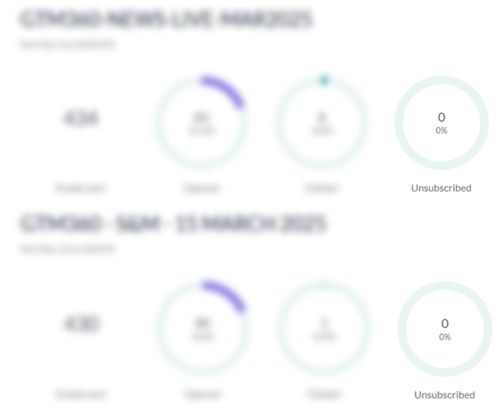(This post is a slightly edited version of my answer to the above Quora question.)
In my company, we run many email newsletter campaigns for customers and ourselves.
We rarely get unsubscribe requests, as you can see from the following exhibit.
On the rare occasion that somebody wants us to stop sending them our future email newsletters, we remove their email address from our mailing lists immediately.
Therefore, it boggles my mind why some companies take several business days to action unsubscribe requests.
I don’t have any firsthand knowledge of what’s happening behind the scenes but that shouldn’t stop me from speculating. I can think of at least three reasons why companies take a long time to process their users’ unsubscribe requests:
- They can’t unsubscribe immediately and don’t. This can happen if they’ve used the subscription list for remarketing and in third party campaigns, and it takes a while to remove an email from all those places.
- They can unsubscribe requests immediately but don’t. This can happen if they want to enjoy the higher reach of their emails for as long as possible and simply delay the unsubscribe action. This is like how banks receive crossborder payments on T+1 or latest T+2 but take 4-5 days to credit your account so that they can boost their float income.
- They have no intention of unsubscribing. I’ve heard that shady data brokers use unsubscribe requests as proof that there’s a human behind the email address and accordingly hike up the price of the email lists they sell. Needless to say, they will never act on your unsubscribe request.
I agree that none of these reasons is too customer-centric but here we are.
Some of these things might seem like nickel-and-diming but, over the years, I’ve reconciled myself to the ubiquity of this behavior in the real world, especially in banking and rideshare industries.
The bigger you are, the more nickel and diming you do. Some even argue that they became big only because they excel at nickel and dime. https://t.co/uUu2daSTg8.https://t.co/EgcogTFKtI
— Ketharaman Swaminathan (@s_ketharaman) November 5, 2023
While on this subject, in our company we started out with two complementary tech stacks for composing and delivering email newsletters:
Desktop (Microsoft Word+Excel+Outlook): Tools in this stack comprise Word for designing emails, mail / merge, and saving emails in HTML / RTF / Plain Text format, depending on the specs of the individual campaign; Excel for list preparation; and Outlook for delivery of emails.
Cloud (MailChimp): Tools in this stack comprise MailChimp’s proprietary tools for design, mail / merge and delivery. While expertise in HTML and CSS is not mandatory, it can be helpful.
Around three years ago, we stopped using the desktop option and switched to the cloud. Around the same time, we discovered EmailOctopus and discontinued MailChimp.
As a platform, EmailOctopus is marginally better than MailChimp for creating email templates and building out lists. When it comes to Customer Support, EmailOctopus is way better than MailChimp.
If you need help with launching your email newsletter campaign, please feel free to contact us.



